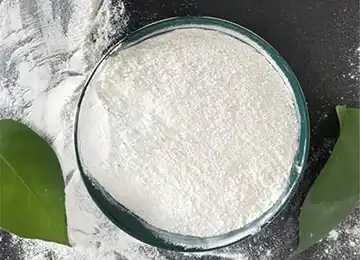As a flame retardant for high molecular polymers, the most important thing for magnesium hydroxide is to be well compatible with the high molecular polymers, achieve uniform dispersion, and ultimately achieve the purpose of flame retardancy. However, magnesium hydroxide has hydrophilic and oleophobic surface properties and high surface energy. Filling the material into the material will cause the performance of the composite material to deteriorate. Therefore, the phase of the magnesium hydroxide flame retardant in the organic resin must be improved through surface modification. Capacity and dispersion.
The surface chemical modification of magnesium hydroxide by Hebei Messi Biology Co., Ltd. uses surface chemistry method, that is, the adsorption or chemical reaction of functional groups in organic molecules or other inorganic gel molecules on the surface of magnesium hydroxide powder to coat the particle surface. It can improve the dispersion and compatibility of magnesium hydroxide in polymer materials.
The method of surface chemical modification of magnesium hydroxide has a simple process flow, easy operation and control, low production cost, and little environmental pollution. Therefore, it has a wide range of applications.

1. Commonly used agents for surface chemical modification of magnesium hydroxide
Commonly used surface modifiers mainly include coupling agents (silane coupling agents, titanate, aluminate coupling agents, etc.) and anionic surfactants (higher fatty acids and their derivatives).
(1) Coupling agent
Coupling agent treatment is currently the most commonly used modification method for surface modification of magnesium hydroxide. Commonly used coupling agents include silane coupling agents, titanate coupling agents and aluminate coupling agents, among which the most commonly used ones are A silane coupling agent.
Silane coupling agent is a type of low molecular organic silicon compound with a special structure. It is generally modified by adding magnesium hydroxide by dry method. Titanate coupling agent can react with hydroxyl groups on the surface of inorganic substances to achieve the purpose of chemical coupling.
In addition to the above two coupling agents, rare earth or rare earth composite coupling agents and aluminate coupling agents are also used to modify the surface of magnesium hydroxide. The modified magnesium hydroxide can improve the physical and mechanical properties of polymer materials. And the processing flow performance is greatly improved.
(2) Anionic surfactant
Anionic surfactants are mainly higher fatty acids and their derivatives. On the one hand, they contain hydrophilic groups that can interact with the hydroxyl groups on the surface of magnesium hydroxide. Multiple hydrophilic groups are linked to the surface of magnesium hydroxide to improve adsorption fastness; On the other hand, polymers are long-chain molecules, and their polymer chains can act as steric hindrance to reduce the agglomeration of magnesium hydroxide and form particles with smaller particle sizes. Compatible with organic resin matrix, long-term use, and not easy to desorb, anionic surfactants have become a promising modifier and have received more and more attention.
At present, there are many reports on the modification of magnesium hydroxide using surfactants, and the research on the modification effect and modification mechanism is relatively mature. In particular, there are preliminary clarifications on whether there is surface saturation in stearic acid-modified magnesium hydroxide, the way the modifier interacts with magnesium hydroxide (lipidation reaction, acid-base reaction, or both) and the modification mechanism. in conclusion.
(3) Modifier compounding
Using two or more different modifiers to dry-modify ultrafine magnesium hydroxide is expected to achieve better modification effects. The combination of different types of modifiers can give full play to their respective advantages and form complementarities. They can show good modification effects in practice and have good development prospects.
2. Magnesium hydroxide surface chemical modification process
Dry and wet methods are usually used in the surface chemical modification of magnesium hydroxide. Dry modification generally uses coupling agents as modifiers. Most coupling agents have poor water resistance and can only be dissolved and diluted in inert organic solvents. Anionic surfactants have good stability in water, and wet methods are generally used.
Hebei Messi Biology Co., Ltd. stated that my country is rich in magnesium resources, with unique resource advantages and good market prospects. Magnesium hydroxide, as an environmentally friendly green inorganic flame retardant with great development potential, has attracted the attention of various countries. Related Research, cooperative development, and production activities are very active. It is foreseeable that the organic combination of ultra-fine refinement, surface modification, and collaborative flame retardant technologies will be an important development direction for magnesium hydroxide modification research in the future.
